10 Amish Quilt Buying Tips
I know we have a lot of readers interested in Amish quilts and many with experience buying them. We’ll be hearing more soon on the subject from Janneken Smucker, author of the upcoming Amish Quilts: Crafting an American Icon, including a chance to ask Amish quilt questions.
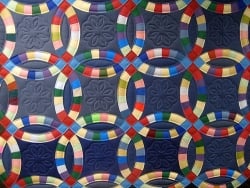
In the meantime, reader GamGam recently left an insightful comment full of tips for Amish quilt buyers. I thought any potential quilt buyers out there might find these useful.
In this list of 10 tips, I think she conveys a reasonable sense of “buyer beware” while reminding us of the value and work in a well-made quilt. And the final tip is worth keeping in mind whatever you’re shopping for:
For the non- quilters, there are certain things that as a seasoned quilter I have learned at quilt shows & sales.
- Not all Quilts are as handmade as you may be led to believe they are.
- Check around the binding for signs of a label being cut out. There are unscrupulous peddlers of homemade Amish quilts that travel around to Quilt Shows with quilts made in China tagged “Amish made” and priced for hundreds of dollars. I saw this at the Sisters, Oregon quilt show a few years ago.
- I know someone who bought a Quilt in Lancaster at an Amish farmhouse business, the quilt was lovely, queen size, cost about $700, BUT … Was made with both cotton and polyester fabric and polyester batting. A big no-no as one shrinks and the other does not when washed. Lesson – Ask about fiber content.
- Most Amish & Hand quilters strive for as many stitches we can needle per inch. If you see 4 stitches per inch, chances are good it may not be authentic Amish made but could be made in China.
- If looking to buy an Amish Quilt, Ask questions and try to buy directly from Amish, confirm fiber contents & authenticity (my sister Miriam Lapp made this quilt).
- Quilting materials are not cheap. We can not compete with Walmart prices. I personally can not whip up a baby quilt by hand (100+ hours) and charge $89.00!
- Many sewing machines now come with a “hand stitch” quilting stitch setting. If a quilt looks too exact, it may be machine instead of hand stitched.
- If gloves are provided please don them as you look through and handle quilts. Nobody wants to buy the quilts that are stained, oily or dirty around the edges from being handled 100′s of times a day.
- Just because it might be an authentic Amish quilt does not mean it is a better quilt.
- If you fall in love with a quilt, just buy it so you don’t kick yourself later for not buying it.
Quilters, quilt buyers, and quilt people out there, have you put any of these recommendations into practice?
Would you add anything to this list?


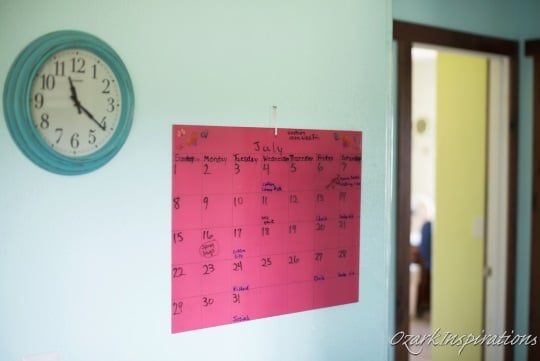
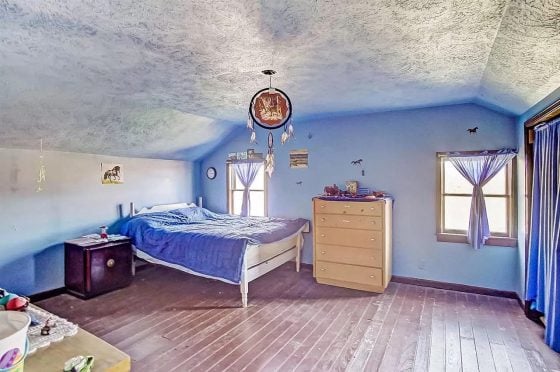

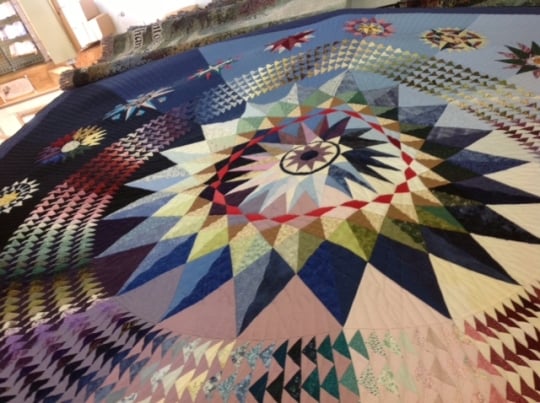
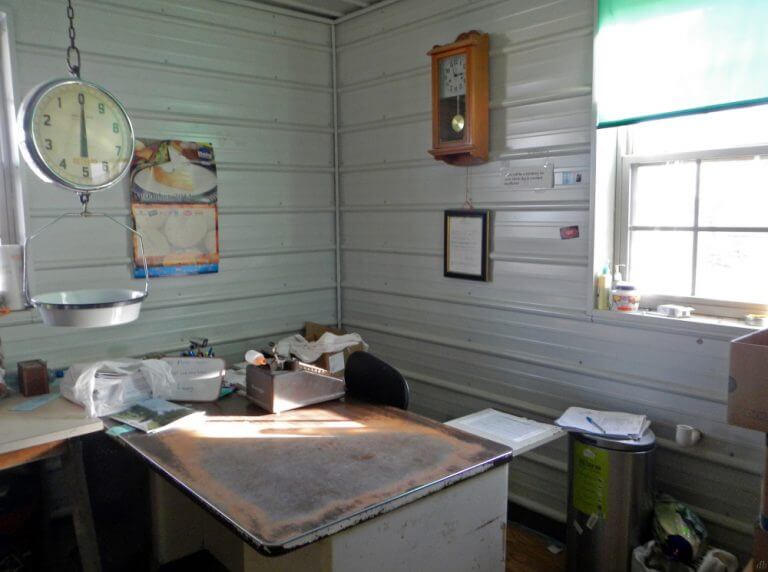
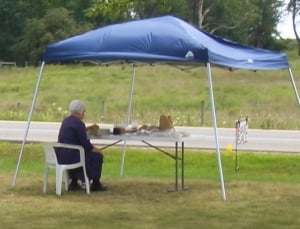
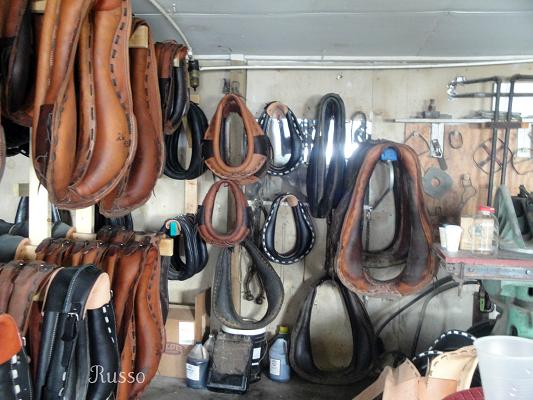
For those of you who consider buying an “Amish” quilt on ebay, take particular note of the description for phrases like “Amish style”, “Almost Amish”. “Amish colors” ect, that indicate that the work is almost certainly not Amish. Ask direct questions about the quilter and their community of origin; bearing in mind that some sellers will simply lie to you… I would advise if at all possible buying it from the maker directly, or at least at a benefit auction like the one in Gladys, Va. last weekend.
Also, I will note that many of the quilts being made by Amish/Mennonite quilters today are not what I consider traditional Amish/Mennonite quilts in terms of the patterns. Many times the quilters use popular patterns that they know are popular with tourists, but that they themselves would not use on their own quilts.
Just my 1.87 cents worth
Forest
Forest, can you give me more info on the benefit auction in Glady’s, VA? Did this benefit have a website? Who sponsored it? I too live in VA and would like to know about any future auction’s in that area. Thanks so much. Judy
Bethel Mennonite Church on 501 just north of Gladys, Va. They have the benefit in October each year. I believe the have a Facebook page under the name Bethel Mennonite Church Fall Festival. It’s a pleasant way to pass an afternoon. Not quite in the mountains, but if it’s clear you can see them from there.
May be worth a lot more than 1.87 to someone, actually. Thanks, Forest.
Spot on re: Patterns and colours
In addition — English folks want all-cotton, Amish folks want wear-like-iron polyester. Sensible but not maybe what tourists are looking for.
Amish quilts
What are traditional amish quilt patterns that they would use on their beds. Besides wedding ring, log cabin and 9patch. Thank you
All of my great grandmothers were quilters.. but unfortunately, I dont have one of their quilts.. When I find one someday that reminds me of one of theirs, I’ll pay handsomely for it..
I’ve browsed many an Amish quilt, displayed by the lovely Amish ladies themselves at bazaars, festivals, and even a quilt shop but none had the quality that Im looking for in a homemade quilt..
I guess I’ll have to make my own one of these days. 😉
'traditional patterns'
For Marijane,
“What are traditional amish quilt patterns that they would use on their beds. Besides wedding ring, log cabin and 9patch. Thank you”
I get this question a lot, being where I am and what I do. Quick answer: With the OOM and OOA I live and work with, and with the OOM I grew up with, there is none.
If there is an established pattern it is for commercial use. That does not mean they are not used, but generally, commercial is for sale. The ‘wedding ring’ is a good example. Some groups will ‘break in’ a commercial by using it, before sale.
‘on their beds’. Pane quilts. Also called ‘crazy panel’. Pane quilts are made up of square or rectangular panes or panels, which can be plain colors, or have sewn applique, stamped, died, stitched, etc, patterns. As the panes can vary in size, there is no set pattern, in fact the most common type is called a ‘cobblestone’, and I am sure you get the meaning there.
More common where I grew up are ‘chicken scratch’ panes. They take gingham (?)(not sure if correct english word) patterns and cross stitch thereon, using the checks as a grid. This is often done for little girls to learn with. And as you might imagine, these are treasured heirlooms to the makers. (In fact, if you find one for sale, you should know that the family is ‘in distress’.) Also, generally, at the passing of a maker, they are destroyed.
As a general rule, for personal quilts, pane edges are turned under, i.e. the stitching to the backing is hidden. Generally, if lock stitched or edge stitched, or any visible stitching, they are not authentic. Commercial may have visible stitching, but no the personal ones.
Another poster mentioned polyester not being used in quilts. Actually, this is done, but not mixed material. I have two gifted ‘true’ Amish baby quilts that are 100% polyester. Urine stains, you understand. I also have ‘panel shams’ which is a pane quilt but no or only one layer of backing. Think of a ‘throw’.
Another tip: the thick felt or velour commercial quilts and blankets you now find, are also now cut into panes, and used along the ‘top’ (head end) of a personal quilt. A well worn ‘buggy blanket’ may also be used this way.
My office chair is covered, as the ‘english’ upholstery is badly worn. It is a polyester panel cover, with batting in the pane ‘puffs’, ‘puffed’ velour panes on the arms and behind the lower back and head. The back has ‘chicken scratch’ of books, as I am a librarian.
Sarah
Polyester use
This isn’t strictly pertaining to quilts, but when polyester first became available, what kind of Act of God or Act of Bishop did it take for acceptance? It seems as though many innovations take forever to be accepted by the Amish. Please enlighten me. Don’t misunderstand, I’m all for making tedious jobs , like laundry, simplified, so this isn’t meant to be a put down.
Probably…none.
As long as they maintained the traditional colors and designs for their group, I wouldn’t see an issue with “pride,” nor would buying polyester from a store instead of cotton cloth increase connections to the world.
And it makes your wife happy she has a bit less work to do, keep quiet and smile.
My impression from years of reading and a little bit of observation is the Amish don’t so much maintain a list of what is approved but instead of what is not allowed. The decisions on what to not allow are made primarily on whether it keeps them “separate” from the world and close-knit as families and communities…balanced with the need to make money.
The women often end up on the short end of that deal — the guys will have an easier time getting a gasoline powered air compressor to run tools in their shop justifying they need it to produce goods to sell at competitive prices, than say an Amish woman being allowed a gasoline-powered lawn mower. The lawn mower would look a bit too worldly, maybe even prideful. The air compressor though isn’t as noticeable and needed to make money. But the decision which fabric to buy, as long as clothes still look like they did before, won’t raise those concerns.
To Carol:
“This isn’t strictly pertaining to quilts, but when polyester first became available, what kind of Act of God or Act of Bishop did it take for acceptance? It seems as though many innovations take forever to be accepted by the Amish. Please enlighten me. Don’t misunderstand, I’m all for making tedious jobs , like laundry, simplified, so this isn’t meant to be a put down.”
As Erik, and others will tell you, part of the fascination of observing these peoples is that there are common themes, but no actual hard and fast rules. And there is a driving need to be ‘conventional’ among themselves, which make for some interesting observations.
I am not aware of any ‘ruling’ pro or con against ‘polyester’, by any of the various groups. I suspect it flew in ‘under the radar’. This does not mean there have not been rulings against some fabrics/weaves/colors by the various groups’ leaderships. I can point to two groups where denim material is forbidden (the weave), and one of them also ruled against the color. But on the other hand, I can point to a Pennsylvania group who allow the kinder to have the ‘Lee’ (only!)(red tag included) brand name jeans, as long as overdyed black. But I have never seen such in a quilt, it would not be ‘conventional’.
Come to think about it, I have never seen denim or jean in any quilt. And polyester only in ‘never for sale’ quilts. So there again, you have a display of ‘conventional’.
Sarah
Differences in how Amish change
Matt and Sarah give good examples and descriptions of how material goods and technologies enter Amish groups and how that can vary between groups and genders.
There are differences between the highest (most liberal/progressive/change-accepting) and lowest (conservative/traditional/change-resistant) groups in what is allowed, but all share the experience of dealing with pressure to change.
Those who are less apt to allow change may find those seemingly small changes more disruptive when they are introduced, to the point that they can become divisive. Things which seem inconsequential to us end up being a big deal, or at least symbolic of other differences and conflicts.
The more permissive groups may be less apt to experience strife over new technologies and material goods, but more apt to change more drastically over time.
Handy
I appreciate all the tips and comments here. If I ever (I hope so!) 🙂 have the opportunity to purchase a REAL Amish quilt, they’ll come in handy. I know I’ll have to save up for the purchase as my husband and I have separate (twin) beds (the quilts wouldn’t need to match, but I might want a similar color scheme).
Is there an “average” price I could expect to pay for an authentic, new handmade Amish quilt (twin size)? Has anyone purchased one recently, and would you be willing to disclose the price and the “area” where it was purchased? As I said, I need to “save up”! I live in the Midwest, so I’d most likely be shopping in the Illinois-Wisconsin-Indiana area, which brings me to another question of whether or not prices vary by region?
Hmmm…Christmas is coming soon! Let me get that list started!
Alice Mary
Amish quilts
Alice Mary,
There are large Amish communities in northern Indiana, near the Shipshewana area where there are auctions of Amish quilts to support their schools. Occasionally, there will be an auction to help pay for someone’s medical expenses as well.
If you visit the Shipshewana area, go to Lolly’s, a fabric shop downtown in the Mercantile.
Lolly’s Fabric Shop
255 E Main St
Shipshewana, IN 46565
Phone:(260) 768-4000
I’m sure they can give you the names of local quilters who would make quilts for you. Lolly’s is one of my favorite places to buy quilt fabric!!
The same is true of southern Indiana. In Washington, IN, there’s a quilt shop downtown; The Stitching Post. Mary Dell, the owner, is very familiar with local Amish ladies who excel in quilting. She should be able to put you in touch with someone who would make quilts for you.
Mary Dell Memering
The Stitching Post
(812)254-6063,
401 E. Main
Washington, IN 47501
http://www.stitchingpostquilts.com.
There’s also an Amish quilt shop right outside of Montgomery, IN; Wagler’s Quilt Shop. If you go visit this shop, take a flashlight with you-no electricity. The Waglers make quilts for others, plus David Wagler is in charge of the quilt auction in Cannelburg every Labor Day Saturday.
Wagler’s Quilt Shop
4413 E 200 N
Montgomery, IN 47558 (812)486-3836
By going this route, you will be sure of getting an authentic gorgeous Amish made quilt that will become a family heirloom.
Useful info!
Thank you for the info, Karen!
Interestingly enough, I was at Lolly’s last Spring as part of a bus tour by my local (IL) community college! I was amazed at the finished quilts there, and took a photo of a really unique looking one (not Amish, I’m sure) with actual purses or pocketbooks that appeared to button closed. I’m sure a little girl (or teen) would love it.
I wouldn’t know where to start (pattern-wise), as one pattern seems more beautiful than the next—then there are the color combinations to consider! (How would I ever choose? So many,many choices!)I will have to study some of the patterns mentioned here, for certain.
You are quite fortunate to own those quilts, and lucky to be able to do your own quilting. It sounds like you really enjoy it!
Again, many thanks!
Alice Mary
Antique Amish and Mennonite quilts in Shipshe area
If you are travelling in northern Indiana and want to see/purchase real Amish and/or Mennonite quilts, you cannot afford to miss Haarer’s Arts and Antiques in downtown Shipshewana. Two large rooms with the first devoted to wonderful new Christmas ornaments and ‘smalls’ (jewelry, baskets etc) and then the quilt room with furniture, quilts, and hooked rugs. Rebecca Haarer is a longtime and respected dealer in antique quilts and she’ll gladly show you what she’s got.Don’t be surprised by the diversity of color and pattern and say ‘hello from Pepper.’
Amish quilt buying
Is the any where or anyone making quilts in the Eastern part of Ohio not far off #71? Not ones that sell China ones? I will be driving down that way to N.C. soon! 🙂
Amish Quilts Ohio
Jacqui, maybe you can piece something together at
https://amishamerica.com/amish-quilts/#oh
Quilt buying
Oh golly Bless your heart! I don’t sew except the very needed. But I may get a bug to learn after I see them in Ohio! I do have a couple from a Grandmother passed on down!
Amish Quilts
Thank you for all the great tips for checking for a real Amish Quilt
To Mary Alice:
You asked about an “average price” for quilts. Here are a few of my observations regarding auction sales.
1. Prices can vary widely depending on who is at the auction. If it is mainly local folks the price may be lower than if people who collect/resell quilts have come specifically for the quilts. 2. It depends on the maker; I have seen quilts that I thought were nice, but not THAT nice, go for premium prices when the maker had recently passed away and so her work was sought after by relatives and friends. 3. Hand pieced and hand quilted usually go higher than machine work. Usually. 4. I have seen king size quilts that were very well quilted go for lower prices if the colors didn’t strike anyone’s fancy.
So all in all, it varies a lot. This past weekend most of the better quilts went for prices ranging from $400 to $700, which I felt was somewhat low, given the time and work that goes into them. Good luck in your search.
Auction Prices
You are right. However, the Cannelburg Auction brings higher prices, usually. I’m guessing it’s a regional thing. This is the only Amish auction I have ever attended. I have seen many Queen/King quilts go for well over $1000, and a few reached $2000. Out of the 100+ quilts that are auctioned, I would say 50% go for $800 or more. The more intricate the piecing and attractive colors/design; the higher the prices.
This auction is attended by local people, but they are there because they know the quilts are all made by Amish folks,machine-pieced and hand-quilted, and are made of good quality quilting shop fabric and not cheaper fabrics.
Sunbonnet Sue and Sunbonnet Sam quilts
When I was a child, my mother made a “Sunbonnet Sue” twin sized quilts and a ” Sunbonnet” boy quilt for my sibling that my mother always referred to as “Sunbonnet Sam”. She said the bonnets reminded her of the Amish. Is the “Sunbonnet” pattern something the Amish make and use in their own homes for their children? If I remember correctly “Sam” had a fishing pole over the shoulder.
sunbonnet sue
If I am thinking of the right pattern, the ‘sunbonnet sue’ applique patch on pane, that was an english pattern from McCall. I have not seen the ‘sam’.
Sarah
Oops… Left something off. If memory serves, it was a multi pattern. There was also a applique butterfly, a barn, and a wagon.
Quilts
I go to the Amish School Auction in Cannelburg, IN every Labor Day weekend. I am a quilter, but love seeing other people’s quilting and gather ideas for my own quilt-making.
I have four Amish-made quilts. I bought the first, a queen size quilt, at an Amish quilt shop in the Shipshewana area. It’s in the Boston Commons pattern in burgundies, ivory and forest green with scalloped borders; an absolutely gorgeous thing! It was made and sold at an Amish auction to help raise money for a local lady who was fighting cancer. I believe I paid around $600 or $700 for it.
The second Amish quilt I had made by a lady in Topeka, IN. We were building a new home and I was searching for someone to make a quilt for our new bedroom. (I didn’t learn to quilt until I retired from teaching about six years ago.) I had been to the fall festival in Shipshewana and had asked a young Amish girl selling baskets if she knew anyone who would make a king size quilt for me. She gave me her step-mother’s name and address. We drove out there, talked with her and selected a pattern. She sent me to Yoder’s in Shipshewana to purchase fabric. I believe that was in October, and the quilt was finished and picked up in late spring. She even made pillow shams for the bed to match. I paid $400 for the fabric and it was another $400 for her to make it, quilt it and do the shams. The pattern name was Scrapaholic, so pretty, and I love scrappy quilts.
The two quilts I bought at the Cannelburg auction were bargains. There are a little over 100 quilts auctioned each year. It’s interesting trying to figure out the psychology of the crowd. Will there be some early or late that will sell for a little less. There are always a few that go for over $2000.
I bought both of my other two quilts there for under $500 and they’re both queen-sized quilts. One, a simpler pattern called Triple Irish Chain, was about $400, and is in pale blues, yellows and creams. I stopped to chat with an Amish lady as I was leaving and learned she had made the blue and yellow one I purchased. She gave me the name of the lady who made the second one I bought as well. That was interesting to learn because the quilter’s son had built cabinets for me in a home I built with my husband in 1994.
The second one, a gorgeous huge pieced star with scalloped edges was an absolute steal at $500. It’s done in cream, various shades of blues and greens in a huge Lone Star pattern, radiating out from the center.
Wish I could share pictures of them all. I sure do treasure them.
I consider it an honor to have these beautiful quilts in my family and will treasure them always. I could never be the talented quilter these ladies are.
Since I make quilts, I don’t purchase many… However, I learned a LOT from this post, and it’s so interesting to hear others experiences with Amish quilts / purchasing. The quilt in the photograph with this post is BEAUTIFUL! :o)
I second this comment–thanks to you quilt folks who have been sharing.
I live in NE Ohio, not too far from Geauga & Trumbull Counties where there are nice sized Amish communities..
I know in these communities, they have several fundraisers thru the year for varying benefits and auctioning off homemade quilts is one of the highlights.. if youre in the market for one anyways. 😉
I imagine that most Amish communities also hold benefits of this sort. It’d be wise to ask someone next time you’re in your nearest Amish settlement.
As an aside.. many farming communities also hold produce auctions.. not the big draws that are commmercially known.. but smaller community auctions. Again.. just ask around.
Fantastic Amish and Mennonite Quilts
If you want to see genuine Amish and Mennonite hand-made quilts from around the state of Ohio, you are invited to the Ohio Mennonite Relief Sale that takes place at the Wayne County Fairgrounds in Wooster, Ohio. The Relief Sale takes place the first weekend of every August. The quilts are excellently made by caring hands at area church women’s sewing groups and other gifted individuals.
It’s nice that you pointed out how you should check around the binding for signs of a label being cut. My mother’s birthday is coming up and I am thinking of giving her a set of Amish handstitched handmade quilts. I need to make sure that I’ll get the authentic ones, so I need to be careful and pay attention to the details.